When choosing aluminum bifold doors, the threshold plays a key role in ensuring smooth operation and a secure, weather-resistant seal.
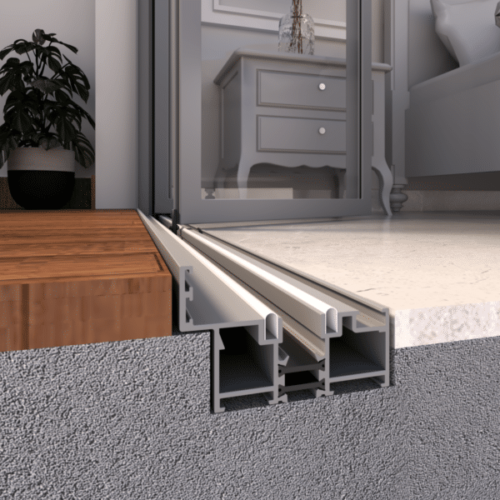
The right threshold not only supports easy door movement but also helps protect your home from drafts, water ingress, and ensures compatibility with your floor.
Types of Aluminum Bifold Door Thresholds
When choosing the right threshold for your aluminum bifold doors, it’s important to understand the different options available.
Each type of threshold serves a specific purpose, offering unique features that enhance your door’s performance, aesthetics, and functionality.
Below, we’ll walk you through the main types of aluminum bifold door thresholds and explain their benefits.
Weathered Threshold
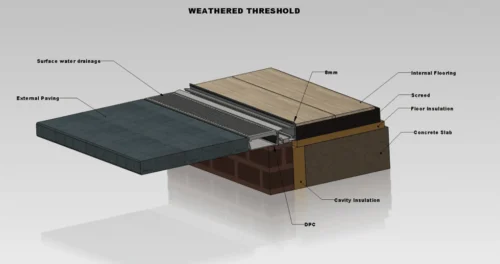
A weathered threshold is your go-to choice for external bifold doors, especially when you need protection against the elements.
This type of threshold features a small raised lip, also known as a rebate, which creates a tighter seal between the door and the threshold.
The seal helps block out drafts, rain, and wind, ensuring that your home stays dry and energy-efficient.
Features & Benefits:
- Weather Resistance: The raised lip and enhanced seal work together to protect your home from rain, wind, and cold drafts. This makes it a perfect choice for areas that experience harsh weather conditions, such as patios, gardens, or coastal regions.
- Water Drainage: The design of a weathered threshold includes drainage channels that direct rainwater away from the door and out of the threshold. This prevents water from pooling in your home, which could otherwise cause damage to the flooring and structure.
- Enhanced Seal: The tight seal between the weathered threshold and door panels reduces the risk of air and moisture leakage, ensuring better insulation and a more comfortable living space.
- Ideal for External Applications: Because of its superior weatherproofing capabilities, a weathered threshold is best used for external doors that face heavy rainfall, strong winds, or even snow.
Recommended Use: If your bifold doors open to an exterior area exposed to the elements, a weathered threshold is your best option.
It offers peace of mind by ensuring that your home stays protected, no matter the weather outside.
Non-Weathered Threshold
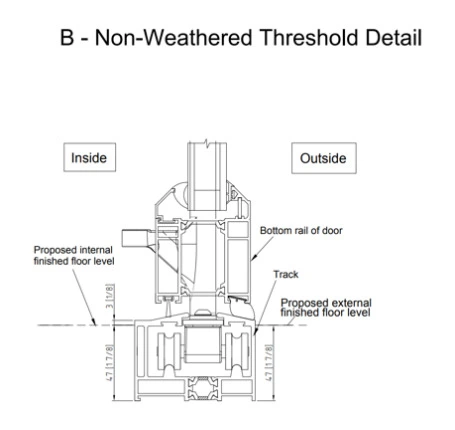
On the flip side, if you’re looking for a sleek, modern look with easy access, the non-weathered threshold could be just what you need.
This type of threshold is flush with the floor, meaning there are no raised lips or barriers, creating a seamless, smooth transition from inside to outside.
Aesthetic Appeal:
- Seamless Integration: The non-weathered threshold is ideal for creating a smooth, uninterrupted look in your home. It’s perfect for those who want their bifold doors to blend seamlessly with the flooring, offering a clean, minimalistic aesthetic.
- Flat Transition: Because there is no raised section, the non-weathered threshold makes it easier to walk through, eliminating any trip hazards. This feature is especially important for households with small children or elderly members.
Best for Sheltered Areas or Internal Use:
- Ideal for Sheltered Spaces: While the non-weathered threshold offers fewer weather-resistant features, it’s still a great choice for sheltered outdoor spaces, like a covered porch or balcony, where rain and wind aren’t a major concern.
- Perfect for Indoor Use: This type of threshold works wonderfully for interior doors, creating a seamless transition between rooms or spaces in the house.
Recommended Use: If your bifold doors are used primarily in sheltered environments or indoors, the non-weathered threshold provides a sleek look with easy access.
Mobility Threshold
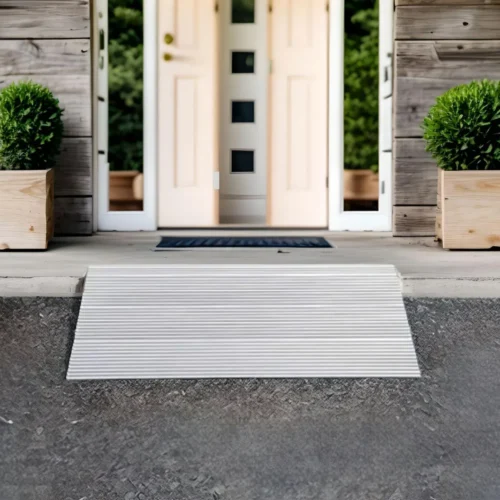
If you or a family member has mobility challenges, the mobility threshold is designed with accessibility in mind.
This threshold option has a lower profile, which makes it easier to navigate, especially for individuals using wheelchairs, walkers, or crutches.
Features & Applications:
- Designed for Accessibility: With its low-profile design, the mobility threshold ensures that there are no barriers or raised sections to cross, making it easy to move through the doorway. This threshold is also compliant with accessibility standards, ensuring that your home is safe and convenient for everyone.
- Ideal for Elderly or Mobility-Impaired Individuals: If you have elderly family members or those with limited mobility, a mobility threshold is a great way to ensure that your home remains accessible without sacrificing the look or function of your bifold doors.
- Smooth Transition: Similar to the non-weathered threshold, the mobility threshold offers a smooth, flat transition, but with the added benefit of being designed specifically to meet accessibility needs.
Recommended Use: Mobility thresholds are ideal for residential or commercial spaces that need to accommodate individuals with mobility impairments, ensuring that everyone can enjoy easy access to the space.
Threshold Dimensions and Options
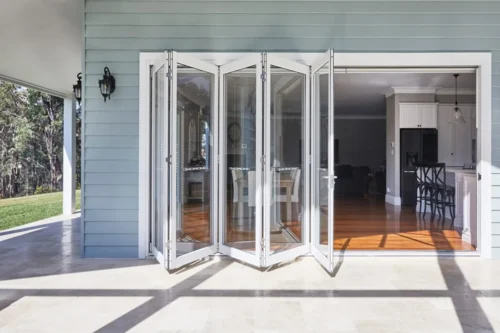
When selecting the right threshold for your aluminum bifold doors, it’s important to understand how dimensions and design choices can affect both the functionality and overall look of your doors.
The threshold height, clearance, and transition style you choose will impact everything from door operation to weather protection and accessibility.
Let’s explore the key factors in more detail.
Standard Threshold Heights and Door Clearance
Choosing the right threshold for your aluminum bifold doors involves understanding the dimensions and available options, as they impact both aesthetics and functionality.
Standard thresholds typically range from 15mm to 30mm, offering durability and performance suitable for most residential and commercial settings.
A higher threshold provides better protection against the elements but may require more clearance, while a lower threshold ensures smoother movement and reduces tripping hazards, making it ideal for homes with accessibility needs.
The clearance needed for your bifold door is directly related to the threshold height.
A higher threshold may create a slight elevation between the floor and the door, which could affect the clearance of the door panel when opening or closing.
For homes where accessibility is a priority, especially those with wheelchair users or elderly residents, a lower threshold ensures a smoother transition and a safer environment.
Comparison of Ultra-Low and Standard Thresholds

When comparing ultra-low and standard thresholds, ultra-low thresholds are favored for their sleek, minimalist design and accessibility benefits.
These thresholds are often used in indoor spaces or sheltered outdoor areas where weather resistance isn’t a major concern.
Ultra-low thresholds are ideal for creating a clean, modern look and ensuring an easy transition, free of any raised barriers.
Standard thresholds, on the other hand, offer better weather protection and are more suitable for external doors exposed to harsh conditions.
They provide a good balance of durability and performance, making them ideal for areas with higher foot traffic or exposure to the elements.
Standard thresholds often incorporate features like a lip or slight rebate that helps channel water away from the interior, keeping your space dry and secure.
Optional Cill Integration for Seamless or Stepped Transitions
Another consideration is the transition type: a seamless or stepped design with a cill.
A seamless transition creates a smooth, uninterrupted flow from indoors to outdoors, perfect for internal bifold doors or when a modern aesthetic is preferred.
This design can create a visually appealing, continuous look that enhances the indoor-outdoor connection, especially in spaces with minimal weather exposure.
However, for external applications, a stepped transition with a cill is a better choice, as it helps prevent water from entering the building while also providing additional weather resistance.
The cill design, paired with a weathered threshold, is particularly beneficial in areas exposed to rain or strong winds.
A stepped threshold can also add a stylish dimension to the overall door design while providing enhanced performance.
Ultimately, the right threshold dimension and transition style depend on the specific needs of your space, balancing accessibility, aesthetics, and weather protection.
Whether opting for a sleek ultra-low threshold or a durable stepped transition, there’s a solution that will ensure both functionality and style.
Choosing the right option can ensure a smooth and safe operation while enhancing the overall look of your bifold door system.
Drainage Systems for Bifold Door Thresholds
Proper drainage is crucial to prevent water pooling and protect your bifold doors from damage.
Two common drainage options for bifold door thresholds are face drainage and concealed drainage.
Face Drainage
Face drainage works by allowing water to exit through capped holes in the outer face of the threshold.
It’s ideal for areas with mild exposure to weather, offering a straightforward solution for internal spaces or sheltered outdoor areas.
While easy to maintain, it may not provide the best protection in heavy rain or strong winds.
Concealed Drainage
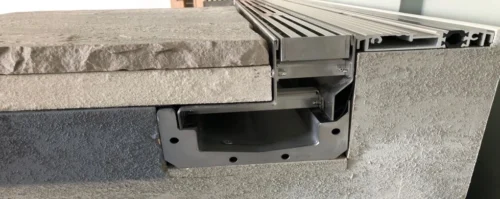
Concealed drainage directs water through a polyamide break barrier into a cill, offering a cleaner, hidden design.
This option provides better weatherproofing and is perfect for areas exposed to harsh weather conditions.
It ensures water is efficiently directed away from the interior, enhancing durability and aesthetic appeal.
Why Drainage Is Essential
Effective drainage prevents water from pooling in the door track, which can lead to damage.
Whether you choose face or concealed drainage, both systems ensure your bifold doors remain functional and protected from water-related issues.
Advantages of Choosing a Weathered Threshold
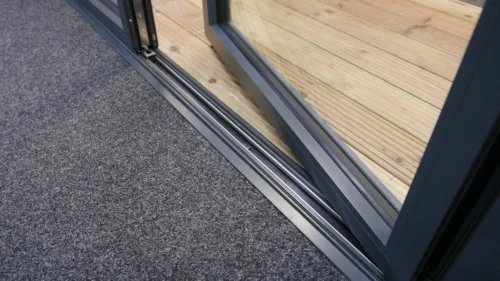
A weathered threshold offers several key advantages, especially in areas exposed to the elements.
- Enhanced Protection from the Elements: With its slightly raised lip, a weathered threshold helps prevent water, wind, and debris from entering your home, offering enhanced weather resistance.
- Ideal for High-Exposure Installations: Weathered thresholds are perfect for patios and other outdoor-facing applications, providing an extra layer of protection in high-exposure environments, such as gardens or terraces.
- Improved Energy Efficiency: By sealing gaps more effectively, a weathered threshold helps reduce drafts, keeping your home warmer in winter and cooler in summer. This boosts energy efficiency and creates a more comfortable indoor environment.
Pros and Cons of Non-Weathered Thresholds
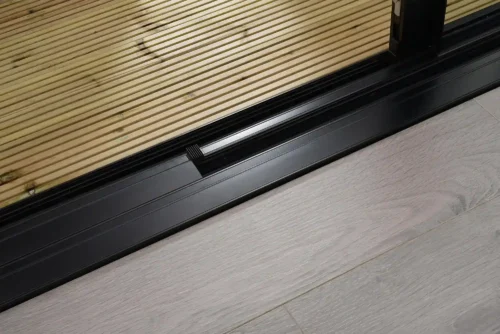
Non-weathered thresholds offer a sleek and minimalist look, but they come with both advantages and limitations.
- Benefits of a Flush Transition: One of the key benefits of a non-weathered threshold is its seamless, flush transition between interior and exterior spaces, eliminating trip hazards and creating a smooth, clean aesthetic.
- Ideal for Interior Applications or Sheltered Exteriors: These thresholds are perfect for indoor use or protected outdoor areas, such as covered patios, where exposure to harsh weather isn’t a concern.
- Limitations in Weather Resistance: However, non-weathered thresholds lack the weather-resistant features of their weathered counterparts. They may not provide the same level of protection against rain or drafts, making them less suitable for areas exposed to the elements.
Maintenance Tips for Aluminum Bifold Door Thresholds

Proper maintenance will help prolong the life and functionality of your aluminum bifold door thresholds.
Regular attention ensures that the doors operate smoothly and remain effective in keeping out the elements.
Cleaning Tips
Regular cleaning is key to keeping your aluminum bifold door thresholds in top shape.
Wipe down the threshold with a soft cloth and mild detergent to remove dirt and debris.
Make sure to clean the seals and drainage channels to ensure smooth operation and prevent blockages.
How to Address Common Issues
Dirt or debris in the tracks can interfere with smooth movement.
To address this, simply remove any obstructions with a soft brush or cloth.
For tougher buildup, use a vacuum or compressed air to clear the tracks.
Checking Seals for Long-Term Performance
Over time, seals may wear or become damaged.
Check them periodically for cracks or gaps, especially after heavy rainfall.
Replacing worn seals will help maintain the threshold’s weather resistance and ensure your bifold doors perform efficiently for years.
Common Issues and Solutions for Bifold Door Thresholds
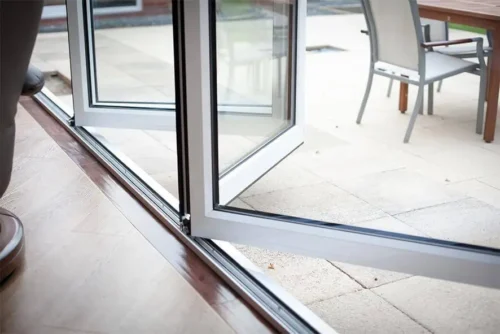
Even the best bifold doors can experience occasional issues.
Knowing how to troubleshoot and address these problems will keep your doors working smoothly and your home protected.
Troubleshooting Drainage Issues
If you notice water pooling around the threshold, it could be due to blocked drainage channels.
Regularly inspect the drainage holes or slots for debris and clear them out.
For concealed drainage systems, check that the polyamide break barrier is intact and free of obstructions.
This ensures water flows properly and doesn’t pool on the threshold.
Solutions for Track Misalignment and Damaged Thresholds
Track misalignment can cause your bifold doors to jam or become difficult to open.
If the track appears misaligned, carefully remove any debris and realign it by gently tapping it back into place.
For damaged thresholds, it’s often best to consult a professional to assess whether repairs or replacements are needed, especially if the damage compromises the door’s weather resistance.
Handling Water Ingress or Leaks
Even with weathered thresholds, water can sometimes seep in due to extreme weather conditions or improper installation.
If leaks occur, first check if the threshold is properly sealed and adjust the door seals if necessary.
If water ingress continues, it might be time to inspect the threshold for damage or consider upgrading to a more robust weathered solution for better protection.
Conclusion
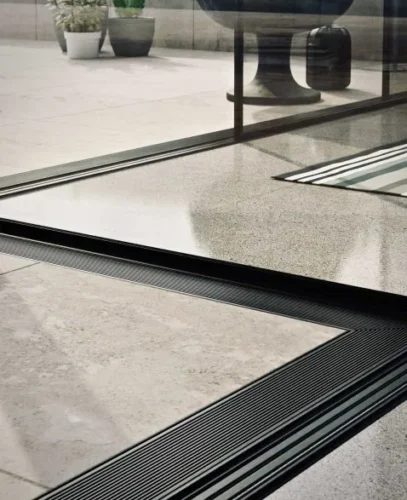
Choosing the right bifold door threshold is crucial for balancing functionality, aesthetics, and weather protection.
Whether you opt for a weathered or non-weathered threshold, each choice impacts your door’s performance and your space’s comfort.
Explore our range of aluminum bifold door thresholds and consult with experts to find the perfect solution for your needs.
FAQs About Aluminum Bifold Door Thresholds
What is the standard threshold for bifold doors?
The standard threshold for bifold doors is typically around 55mm for external applications.
This threshold not only enhances the overall aesthetic of your bifold doors but also provides excellent weatherproofing, helping to keep your home dry and warm by acting as a barrier against external elements.
How do you cut an aluminum door threshold?
To cut an aluminum door threshold, you can use a variety of tools.
A table saw with a decent blade works well, but a band saw is preferred for cleaner cuts.
Alternatively, a grinder with a metal-cutting blade or a worm drive skilsaw with an abrasive blade can also do the job if you’re comfortable using them.
Should the base of my bifold doors be flush with the floor?
Whether the base of your bifold doors should be flush with the floor depends on your aesthetic and functional preferences.
Flush thresholds allow for easy movement between the inside and outside, but they do provide a lower level of weather resistance.
If you are concerned about water infiltration, a standard or weathered threshold might be a better choice.
What is the new trend instead of bifold doors?
Sliding doors have become an increasingly popular alternative to bifold doors.
Their sleek design and minimal framing offer uninterrupted views, making them perfect for spaces where you want a wide opening but don’t have the clearance for folding panels.
They provide a more modern, streamlined look compared to bifold doors.
How much clearance do you need for a bifold door?
Bifold doors require about 1-½ inches less in height than the finished opening and are typically ½ inch smaller in width than the stated size.
This clearance ensures smooth operation of the door panels and proper alignment with the tracks.
Related Articles
Aluminum Bifold Door Adjustment Guide

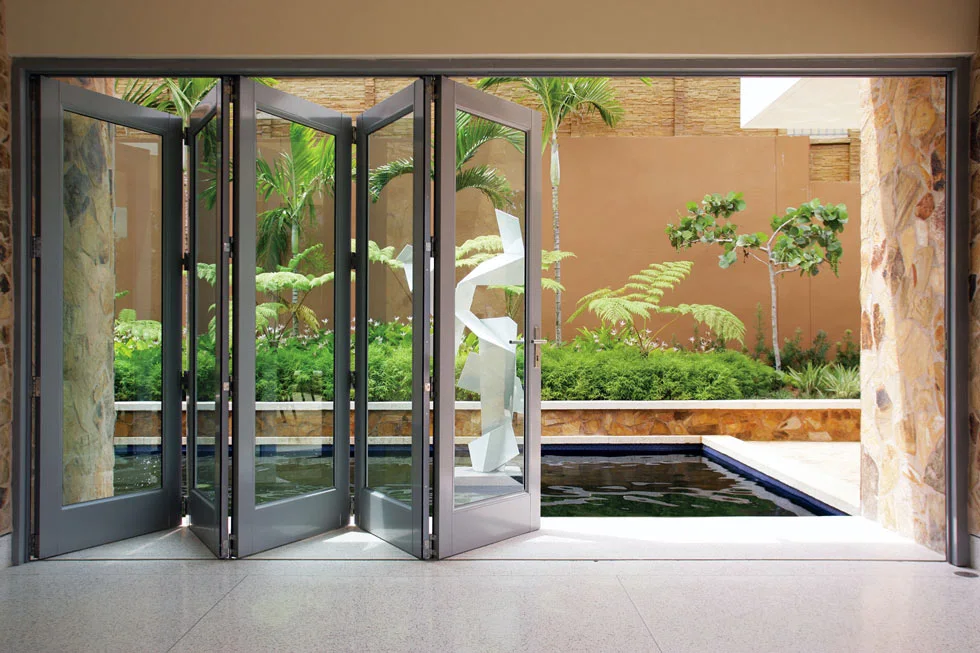
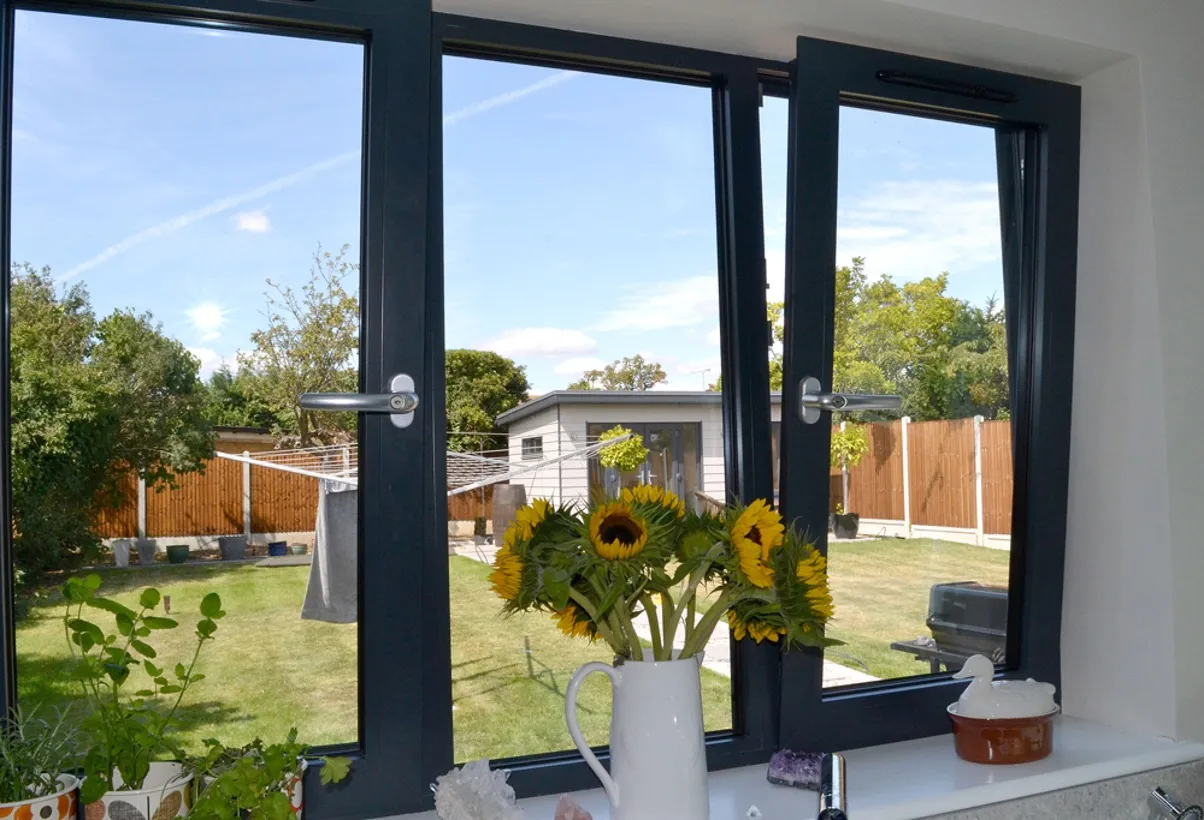
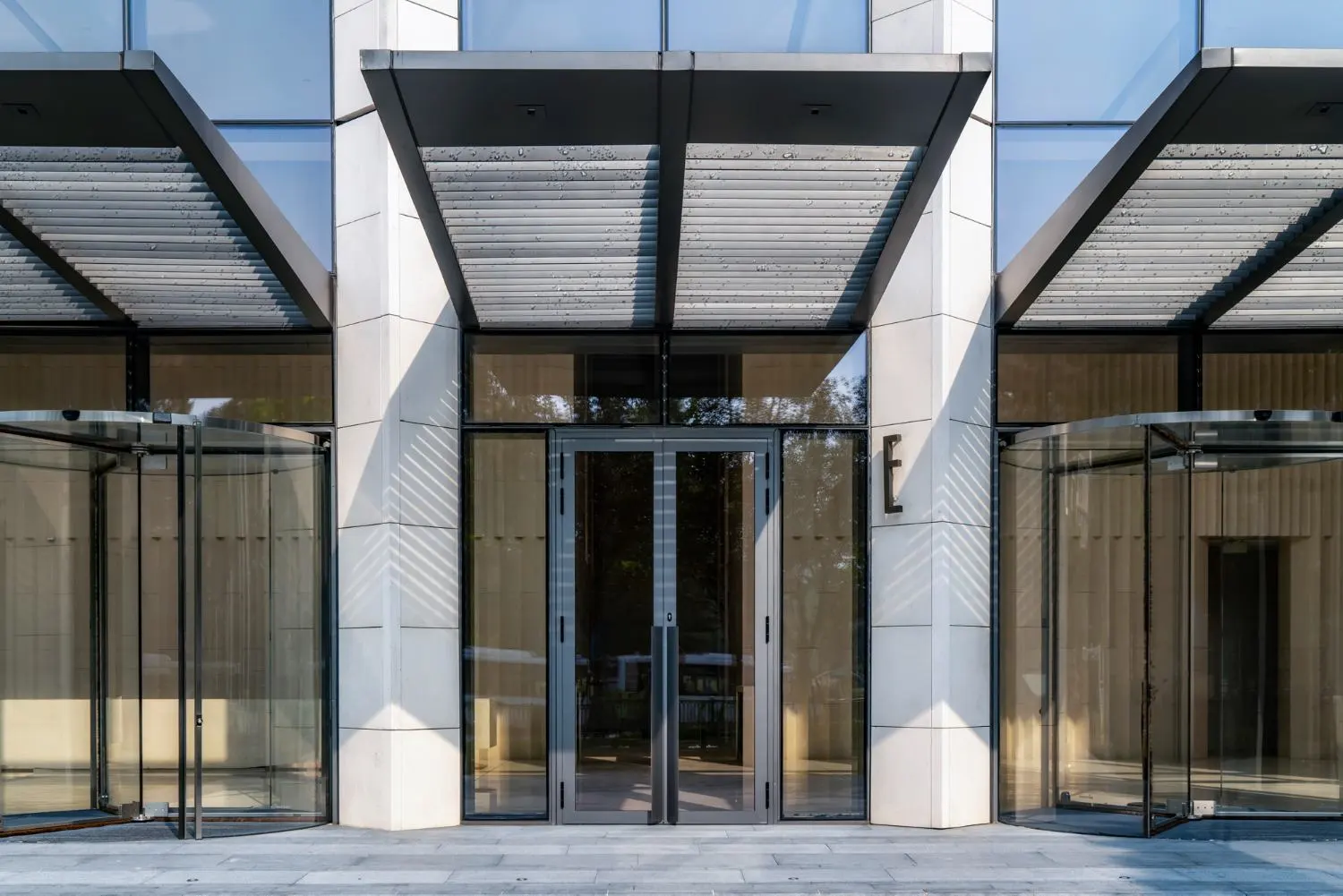


![gray door with silver handle sign that says no - Are Aluminum Doors Better Than Upvc? [November 2025] - APRO gray door with silver handle sign that says no](https://aprowin.com/wp-content/uploads/2024/09/gray-door-with-silver-handle-sign-that-says-no-500x280.webp)
![Sliding glass doors opening to a poolside view in a living room - How Much Does a Door Cost? Door Installation Guide [2025] - APRO Sliding glass doors opening to a poolside view in a living room](https://aprowin.com/wp-content/uploads/2024/11/Sliding-glass-doors-opening-to-a-poolside-view-in-a-living-room-500x328.webp)
![Living room with sliding glass doors leading to a balcony - Standard Door Sizes: Essential Guide for Homeowners [2025] - APRO Living room with sliding glass doors leading to a balcony](https://aprowin.com/wp-content/uploads/2024/11/Living-room-with-sliding-glass-doors-leading-to-a-balcony-500x333.webp)
![Two garage doors with windows and overhead door mechanism - How to Adjust Garage Door Springs: Easy Guide [2025] - APRO Two garage doors with windows and overhead door mechanism](https://aprowin.com/wp-content/uploads/2025/02/Two-garage-doors-with-windows-and-overhead-door-mechanism-500x320.webp)
![Roller assembly being installed on a sliding window frame - How to Replace Rollers on Aluminum Sliding Door [2025] - APRO Roller assembly being installed on a sliding window frame](https://aprowin.com/wp-content/uploads/2025/01/Roller-assembly-being-installed-on-a-sliding-window-frame-500x489.webp)
![Exterior black aluminum bifold doors partially open - Aluminum Bifold Door Adjustment Guide | Tips [ 2025] - APRO Exterior black aluminum bifold doors partially open](https://aprowin.com/wp-content/uploads/2025/01/Exterior-black-aluminum-bifold-doors-partially-open.webp)
